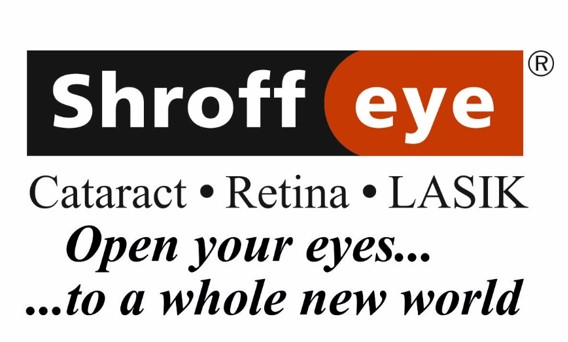Shroff Eye Hospital is India's First Eye Hospital accredited by the Joint Commission International (USA) since 2006. Shroff Eye is also India's first and only Wavelight Concerto 500 Hz LASIK center. Shroff Eye has stood for excellence in eye care since 1919. A firm commitment to quality is at the heart of all services provided at our centers at Bandra(W) and Marine Drive, Mumbai.
What causes cataracts in children?
Some cataracts are present at birth (called congenital cataracts), and others develop during the first few months or years of life. Some cataracts are hereditary, and others due to metabolic or systemic abnormalities. In many cases, the cause is unknown. In the older child, cataracts are often related to injuries or ocular inflammation related to juvenile rheumatoid arthritis.
How do we know if a cataract is there? Can the parents see it?
Occasionally, parents may notice a ‘white colour’ in the centre of the baby’s eye or a ‘white dot’ in the pupil. Usually, though, a doctor diagnoses it. Hence, it is an important part of the examination that pediatricians perform on newborn babies and in their follow up visits.
Why would this happen to my baby?
It’s very rare for a baby to get a cataract, but it does happen. The difference is that in children, the lens clouds over because it didn’t form properly. In adults, a normal lens just gets old and hard and yellow and finally clouds over.
Why must my baby’s cataract be treated right away?
Babies with a cataract should be seen by an experienced ophthalmologist as soon as the cataract is discovered. In adults, timing of cataract surgery won’t affect vision over the long-term, but in babies delaying surgery can mean permanent vision loss. That’s because when a cataract forms, the lens isn’t focusing light for the brain and the brain, in turn, gets no visual stimulation or experience. The brain is deprived of images during the critical time when it is supposed to be learning how to see. If the brain continues to get no input from the affected eye, it may completely ignore the eye and never learn to pay attention to it.
Do all cataracts have to be removed?
There are some cases where the cataract may be just a dot in the middle of the lens that need not be removed immediately because there is room for the light to get around it. Other times the experience of the treating doctor plays a great role in the decision making process. Hence, it is important that your child be evaluated by an ophthalmologist who sees many babies with cataracts and is qualified to make critical decisions such as whether to operate or not.
What should be done and expected in terms of vision?
When a visually significant cataract occurs in a child, prompt surgery and rehabilitation are required to maximize visual development. The visual outcome for children with cataracts is much more optimistic now than it was a few years ago. However, some eyes will have associated abnormalities, which limit the visual potential that can be obtained, despite early surgery and adequate visual rehabilitation.
Preoperative evaluation: A complete preoperative evaluation or check up of both eyes is required. Some cataracts are unilateral (in one eye only) and then the other normal eye requires careful evaluation with follow up check ups as well. An eye with a cataract may have other associated abnormalities, for example: inflammation, abnormal tissue behind the lens of the eye, and glaucoma, which therefore require a skilled doctor to perform the assessment preoperatively.
How are cataracts in children treated?
There are three important parts in the management of the child with a cataract: Preoperative evaluation, surgery, and visual rehabilitation.
Can the implant be seen?
Not normally. Usually the implant stays behind the iris, the colored part of the eye, in the middle of the pupil. Some parents say that the eye with the implant seems to have a “sparkle” or “glint” if light catches it just right.
What post-operative issues should we be aware of?
Despite adequate optical rehabilitation (a new lens) and patching therapy, misalignment of the eyes (strabismus) may develop. This may require eye muscle surgery to improve the alignment. Periodic evaluations are required to follow up on other conditions which may also occur such as inflammation, glaucoma, retinal detachment.
Will glasses be needed?
Usually glasses are needed to perfect the focus. We often have to leave the eye a little farsighted at first to allow for the eye to grow. Also the formulas, while quite exact, can never predict the final power of the eye perfectly. So a lens is added to promote the best possible vision development. One other thing – natural lenses adjust to shift focus from distance to near, but plastic intraocular lenses are going to focus at one place. They cannot shift focus, so once children are able to sit up, we tend to put them in bifocals. These glasses will help your child focus up close and far away.
A child who has undergone cataract surgery requires close monitoring of visual development and will need changes in glasses or contact lenses as the eye matures. The parents must accept the responsibility for the optical rehabilitation, patching therapy, and continued follow-up care that is required to maximize the visual development in the operated eye.






